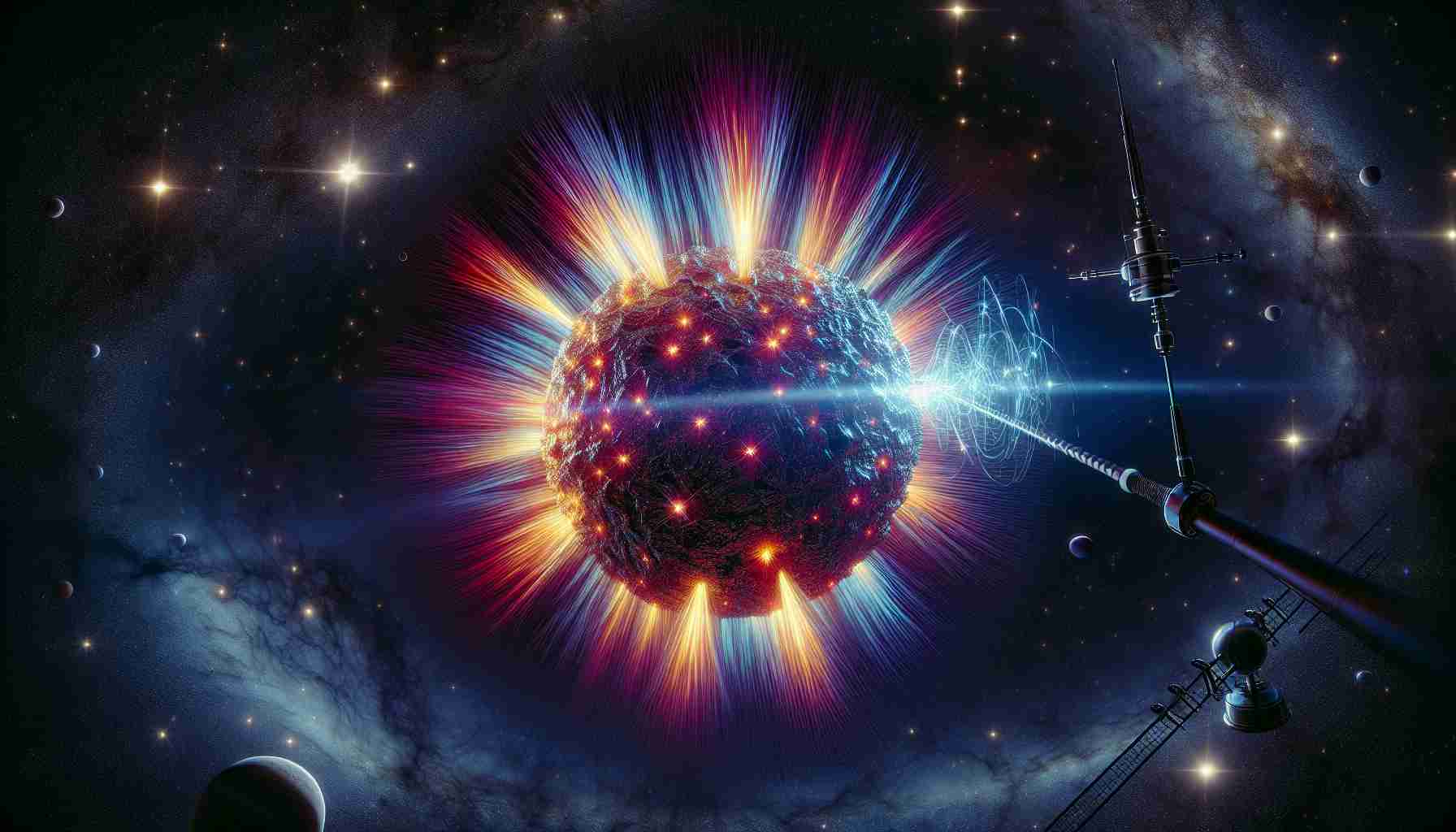In October 2022, the NICER (Neutron Star Interior Composition Explorer) aboard the International Space Station and the NuSTAR (Nuclear Spectroscopic Telescope Array) in low Earth orbit detected a Fast Radio Burst (FRB) originating from SGR 1935+2154, a magnetar. These observations provided valuable data about the magnetar’s surface activity before and after the occurrence of the radio burst.
Researchers were surprised to find that the FRB occurred between two periods of rapid acceleration of the magnetar. Typically, a magnetar requires weeks or months to return to its standard rotational speed after a change in velocity. However, in this particular case, the magnetar recovered its rotational velocity within just 9 hours, which is significantly faster than expected.
Magnetars, like neutron stars, are incredibly dense, with a mass equivalent to compressing Mount Everest into a sugar cube. The intense gravitational force exerted by a magnetar means that any object falling onto its surface would experience a force similar to a nuclear bomb. This gravitational intensity leads to the release of X-ray and gamma-ray radiation from the magnetar’s surface. It was precisely this growing activity that prompted the operators of NICER and NuSTAR to point their instruments directly at SGR 1935+2154, eventually leading to the observation of the FRB.
The increased X-ray activity occurred prior to the change in velocity, suggesting that the bursts of energy released were powerful enough to trigger an FRB. However, the exact mechanism behind this phenomenon is still unknown. One possibility is that a loss of synchronization between the outer crust and the fluid interior of the magnetar resulted in the release of additional energy. The researchers speculate that a fracture or eruption in the magnetar’s crust could have expelled material from its interior, resulting in a decrease in mass and a slowdown of its rotational movement.
While these findings are crucial for understanding the nature of fast radio bursts, more data is needed to fully unravel this mystery. “We have undoubtedly witnessed something significant in unraveling the nature of fast radio bursts. However, we require a substantial amount of additional data to solve this puzzle,” emphasizes George Younes from NASA, whose team specializes in studying magnetars. The study of magnetars and their role in generating fast radio bursts continues to shed light on the intricate workings of the universe, providing new insights into astrophysics.
FAQs about the Fast Radio Burst (FRB) and Magnetars:
1. What is the recent discovery regarding Fast Radio Bursts (FRBs)?
The recent discovery involved the detection of an FRB originating from a magnetar named SGR 1935+2154. The FRB was observed by the NICER (Neutron Star Interior Composition Explorer) and NuSTAR (Nuclear Spectroscopic Telescope Array) in October 2022.
2. What are magnetars?
Magnetars are a type of neutron star that are incredibly dense. They have a mass equivalent to compressing Mount Everest into a sugar cube. The strong gravitational force of magnetars leads to the release of X-ray and gamma-ray radiation from their surfaces.
3. What did the observations reveal about the magnetar’s surface activity?
The observations revealed that the FRB occurred between two periods of rapid acceleration of the magnetar. Surprisingly, the magnetar recovered its rotational velocity within just 9 hours, which is faster than expected. Typically, a magnetar takes weeks or months to return to its standard rotational speed after a change in velocity.
4. What could have triggered the FRB?
The increased X-ray activity prior to the change in velocity suggests that bursts of energy released by the magnetar may have triggered the FRB. However, the exact mechanism behind this phenomenon is still unknown. One possibility is a loss of synchronization between the magnetar’s outer crust and fluid interior, leading to the release of additional energy.
5. What is the significance of these findings?
The findings are crucial for understanding the nature of fast radio bursts. They provide valuable data and insights into the behavior of magnetars and their role in generating FRBs. However, more data is needed to fully unravel this mystery.
Key Terms:
– Fast Radio Burst (FRB): A high-energy astrophysical phenomenon characterized by a brief and intense burst of radio waves.
– Magnetar: A type of neutron star with a strong magnetic field.
– Neutron Star: A highly compact star formed from the remnants of a supernova explosion.
Related Links:
– NICER: Official website of the Neutron Star Interior Composition Explorer.
– NuSTAR: Official website of the Nuclear Spectroscopic Telescope Array.
– NASA: Official website of the National Aeronautics and Space Administration.
The source of the article is from the blog smartphonemagazine.nl
